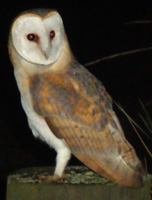 |
Birdwatching |
||||||||||||
|
ACCOMMODATION
|
A wide range of different habitats mean that Craster is a particularly rich environment for bird watching. Many species can be seen in the village and within a short walk, along the coast or inland. There is a good chance of seeing the following birds: In the Surrounds of the Village
During the summer, bats become obvious at dusk, circling the buildings and trees for prey. Gorse, Grassland and Hueghs
Stonehatches are common in the area and usually to be found on the landward slopes of Dunstanburgh Castle. Also around the Castle, look out for wheatear and linnet. Skylarks are to be seen in the fields between Craster and Cullernose. On the pools near Dunstanburgh Castle look out for coot, moorhen and mute swans. Heugh is the name given locally to limestone escarpments, which typically have cliffs to landward and slope gently to the sea. The gate opposite the Tourist Information Centre gives access to a pleasant path to Dunstanburgh Castle, bounded by the heugh on the seaward side, where yellowhammer and linnets are to be found. Buzzards, which are resident inland of Craster, sometimes patrol the heughs.
Around the harbourEider duck, turnstone, redshank, black headed gulls and herring gulls are common. Pied, and more rarely grey, wagtails may also be seen. ForeshoreOyster catchers, eider ducks and rock pipits are common. Little auks are seen when bad weather blows them south from their normal habitats. Snow buntings winter along the shore line in small flocks. Heron, curlew and redshank may be seen all year round. Out to SeaSome distance from the shore, gannets may be seen travelling north or south and sometimes diving for fish. With a pair of binoculars and some patience, puffins and guillemots may be spotted offshore during the summer. Arctic and sandwich terns are more easily seen summer visitors, diving for fish close to the shore. Shags, cormorants, black headed, and herring gulls are common. Sea Cliffs at Dunstanburgh Castle and Cullernose PointKittiwakes and fulmar are summer visitors. When they are nesting, look out for crows stealing eggs and chicks at Cullernose Point. Razorbills and shag also nest at Dunstanburgh. Peregrine falcon may be seen on the cliffs of Dunstanburgh Castle. Download Northumbrian bird watching guides from Visit Northumberland For the musings of a local bird watcher, visit the Boulmer Birder Birdwatching ToursBorders and Northumberland Birdwatching Tours
|


